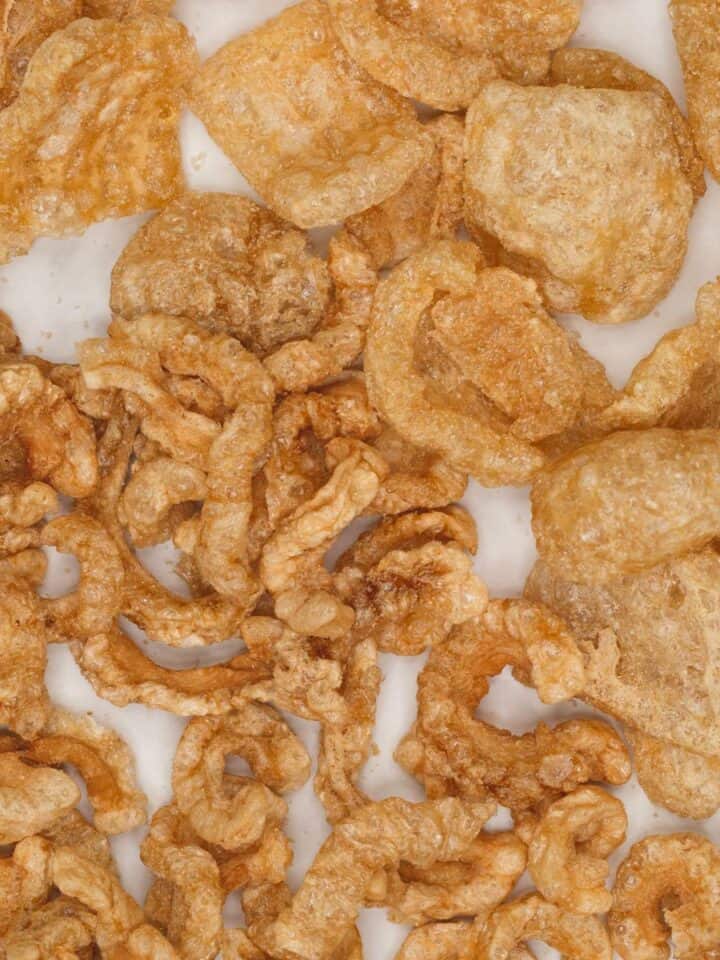Tamarind with its distinct sweet and sour flavor, is a staple in Filipino kitchens around the world. It's notably the key ingredient in Sinigang, the classic Filipino soup we love for its tangy flavor.

Jump to:
What is tamarind?
Tamarind, or "sampalok" as it's called in the Philippines, belongs to the legume family. It is a tropical fruit that comes from the tamarind tree, Tamarindus indica.
While it is originally native to Africa, it has since made its way across the globe, thriving in the warm, tropical climates of Asia and Latin America, including countries like India, Thailand, and Mexico, and even extending its reach to the Middle East.
This unique fruit has a sweet and sour taste. It has a brown, pod-like shell and contains a sticky, fibrous pulp with seeds inside. The tangy pulp, used in both cooking and beverages, is an essential souring agent in the popular soup, Sinigang.

What does tamarind taste like?
Tamarind has a sweet and sour taste that is unique in its own right. When you first try pure tamarind, you might notice a sharp tartness, like lemon. It has an underlying caramel-like sweetness, somewhat like molasses or brown sugar.
The flavor of tamarind can vary depending on how ripe it is. Younger, green tamarind tends to be more sour and intense, while mature tamarind is sweeter and less acidic.
Its pulp is sticky and dense, like a thick paste. It feels a bit like a moist date; it's squishy and can be molded or shaped with some pressure.
As you break apart or mash the pulp, you'll notice it's fibrous and slightly grainy texture due to the seeds and the stringy parts of the pod.
How to eat tamarind?
Start by cracking open the brittle outer shell of the pod. Inside, you will find the sticky and fibrous pulp that surrounds the seeds.
Remove the veins and enjoy the pulp raw, spitting out the seeds. You can also use the pulp to make tamarind paste or juice, and can be sweetened with sugar and used to make candies.

Is tamarind good for you?
Tamarind is considered good for your health as it is high in antioxidants and beneficial nutrients like calcium, fiber, magnesium, and potassium. These elements help fight cellular damage and reduce inflammation. They also support nerve and muscle function, as well as bone strength.
Furthermore, tamarind may also aid in managing obesity and diabetes due to its anti-inflammatory properties and low glycemic index. However, It's important to remember that everyone's body reacts differently, so the benefits can vary from person to person.

Where can i find tamarind?
If you live in the Philippines or other tropical regions, you are likely to find fresh, pure tamarind pods in local markets. However, ready-to-use sinigang mixes have become widely popular because they're so easy to use.
In the United States, you can find them at Asian, Filipino, and Latin American markets. Tamarind paste or concentrate, which has a thick syrup-like consistency, is also a popular choice. While these are convenient options, it's important to consider that they may include preservatives and other ingredients.

How to use tamarind?
To use raw tamarind, remove its shell and soak the pulp in hot water to soften them. Then, strain the mixture to remove the seeds and fibers and create a smooth paste or concentrate.
This tamarind base can be added to dishes like sauces and soups, adding a unique sweet-sour flavor and slightly thickening the texture.
Tamarind recipes to try
Tamarind adds a unique sweet-sour flavor to a variety of dishes. Here are some examples:
- Sinigang: Sour soup with proteins and a medley of vegetables, like kangkong and sitaw, in a tamarind-based broth.
- Sampalok Candy: Sweet and sour candies made from reduced tamarind pulp and sugar.
- Sinampalukang Manok: A chicken soup flavored with young tamarind leaves.
- Pad Thai: Sweet and sour Thai noodles with peanuts.
- Tom Yum Soup: Thai hot and sour soup where tamarind adds a crucial sour element.
- Crispy Sinigang Wings: Lightly coated chicken wings, flavored with tangy sinigang mix, then fried until crispy.

Other ingredient guides you may like

Did you like this post? I would love to know! Your feedback helps me make better recipes. Please rate, review, or comment below. Questions about this post are welcome, too!
Let's connect on Facebook, Instagram, Pinterest, TikTok, Twitter, and Youtube. Be sure to tag me when you try any of my recipes @recipesbynora!











M
Thank you
Nora Reyes
Hi, M! It's always my pleasure!